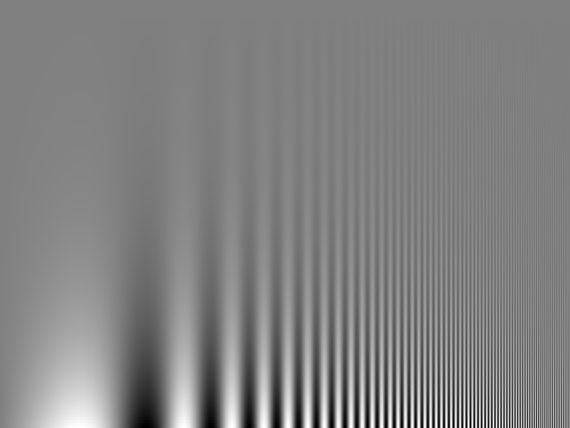Contrast Sensitivity
When conducting a visible dye penetrant inspection, the contrast sensitivity of the eye is important. Contrast sensitivity is a measure of how faded or washed out an image can be before it becomes indistinguishable from a uniform field. It has been experimentally determined that the minimum discernible difference in gray scale level that the eye can detect is about 2% of full brightness. Contrast sensitivity is a function of the size or spatial frequency of the features in the image. However, this is not a direct relationship as larger objects are not always easier to see than smaller objects (as demonstrated by the image below).
In the image below, the luminance of pixels is varied sinusoidally in the horizontal direction. The spatial frequency increases exponentially from left to right. The contrast also varies logarithmically from 100% at the bottom to about 0.5% at the top. The luminance of peaks and troughs remains constant along a given horizontal path through the image. If the detection of contrast was dictated solely by image contrast, the alternating bright and dark bars should appear to have equal height everywhere in the image. However, the bars seem to be taller in the middle of the image.

Ref: The Internet site of the John Moran Eye Center, Department of Ophthalmology at the University of Utah. http://webvision.med.utah.edu/